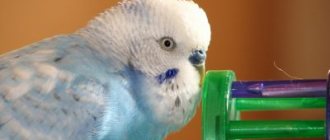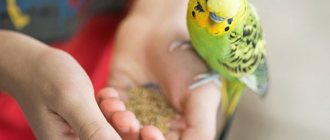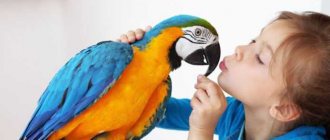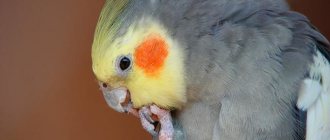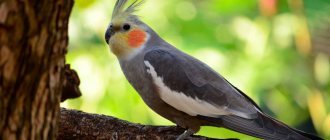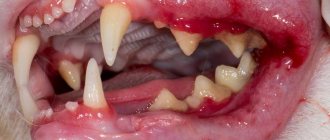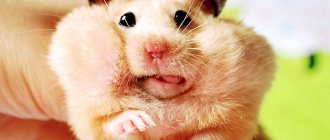If you often communicate and play with your winged pets, then you know their habits well. Then you can easily detect any change in their behavior. If the feathered interlocutor behaves differently than usual, then something has happened. Therefore, you do not need to be an expert in diagnosing a specific disease in budgies. If you see that your parrot's behavior has changed, it is most likely sick.
Checking the health of budgerigars
If you keep many budgies in an aviary, it will be more difficult to identify individual problems. So always be on your guard. Like many animals, budgies are excellent at hiding their illnesses. They can do this until the disease reaches critical stages. This makes sense in the wild. After all, predators quickly spot easy prey. And a sick-looking bird will be an easy target for them. Therefore, budgerigars carefully hide their health problems.
Once you have determined that your bird is sick, go to the veterinarian as soon as possible. The person you contact should be a bird expert, that is, an ornithologist. If your veterinarian tells you that there is no point in treating small birds such as budgies, choose another specialist. This statement is not true; birds can be treated. This happens because most veterinarians prefer to treat cats and dogs.
How to cure a parrot
It is possible to cure a parrot only if it is correctly diagnosed. And only a specialist can do this. At the first symptoms of a parrot’s illness, it should be isolated from other pets and contact an ornithologist.
Veterinary clinics
In veterinary clinics, budgerigars are treated by a veterinarian. Drugs for treatment are selected depending on the diagnosis:
- For infections, these are antibiotics, anti-inflammatory, and restorative medications.
- Poisoning is treated with adsorbents and medications containing enzymes (Smecta, Enterosgel).
- To improve the functioning of the digestive tract, Vetom and Linex are used.
- Internal bleeding, which is manifested by black droppings, is treated with Dicin.
- Ectoparasites are removed with Aversectin ointment, Insectol, Celandine spray, Frontline.
There are diseases that appear gradually and are difficult to recognize at an early stage. If you treat your bird carefully, the chances of extending the pet’s life increase. Therefore, you should not postpone a visit to the veterinary clinic if you suspect any pathology.
Self-medication
Self-medication is dangerous. You can only organize proper care for a sick pet or take a number of measures that eliminate the factors that provoke the disease:
- diversify the bird's diet;
- keep the cage clean;
- connect vitamin preparations;
- maintain a comfortable indoor microclimate;
- eliminate drafts;
- Let the bird fly around the room more often.
If your pet has a cold, you can give your pet warm, weak tea with a drop of lemon and honey, and add chamomile to the drinking water. Eucalyptus inhalations will help fight respiratory tract infections.
Beak diseases in budgerigars, which most often occur due to vitamin deficiency, infections or tick attacks, should not be ignored. The beak of a bird is associated with vital functions such as feeding and breathing. Potent medications are given to birds only as prescribed by a veterinarian.
It is better to treat wounds and ulcers at home with brilliant green, but not with iodine, which can burn the delicate skin of the bird.
Self-examination
If you spend time with your feathered friend, then you know what a healthy budgie looks like. Then any change in your bird's appearance or behavior will not escape your attention. There are many diseases that can affect budgies. You are required to watch the birds and talk to an ornithologist. As soon as you notice any problems, from a broken wing to mild lethargy, contact an ornithologist immediately.
You can also carefully examine your pet yourself to check for problems such as wounds and lice. It is quite easy to persuade a tame bird to sit on your hand. Once there, carefully pick it up and inspect it as quickly as possible so as not to disturb it too much.
How do healthy parrots differ from sick ones?
A healthy budgie has bright plumage, very shiny and beautiful . His eyes are wide open, very expressive, they sparkle mischievously. Parrots react cheerfully to their surroundings, play and sing. They love to rest, standing on one paw. With love and proper care, a parrot will live up to 16 years, or even more. Unfortunately, this rarely happens. If the owners do not even neglect the health of their bird, then they realize too late that something is wrong with their bird.
And this is easy to determine. Symptoms are visible after just one day. A sick budgie trembles, constantly crests, sleeps a lot, mostly rests on a perch, while sitting on two legs. Does not want to bathe or clean feathers in general. There are other symptoms that can help you determine that something is wrong with your bird, but these are enough.
Symptoms of budgerigar disease
The following signs indicate the presence of the disease.
Lethargy
Even the most timid of budgies cannot spend long periods of time in silence and stillness. Unless, of course, they are sleeping. If a bird sits in silence for a long time, it has no interest in you, new food, its mate and other things, then it is sick. In addition to the fact that you have a lethargic budgie, there may be other signs: the pet is ruffled, has ruffled feathers, does not eat or drink, etc.
Daytime nap
It may be due to external interference at night. But if you can rule it out, lethargy is a symptom of budgie disease. One of the reasons may be an infestation with feather mites. These bloodsuckers will not allow you to get a good night's sleep.
Ruffled Feathers
This means the bird is frozen. Reasons: cold cage or aviary, budgerigar is unhealthy. A frozen budgie may also shiver.
High-pitched scream
If your bird is constantly calling in alarm, it is in trouble. There can be 2 situations here:
- Someone or something nearby is bothering the bird.
- The bird is in pain.
There may be no visible symptoms of budgie disease. However, if you are sure that there is no one or anything nearby that could cause concern, then your pet is sick.
Doesn't sit like it used to
The bird may suddenly begin to rest on the ground or tray rather than on the perch. In this case, she either damaged her wing or was too weak to sit on the perch. Another, less serious sign of problems is when a parrot who always sleeps on one leg starts sleeping on both legs.
Dirty next to the cesspool
This is always a sign of loose or sticky droppings (diarrhea), which usually indicates a health problem.
Read here what to do if your budgie has abnormal droppings, diarrhea or constipation.
Refusal to eat
Some reasons why a budgie won't eat or drink:
- problems with the gastrointestinal tract,
- poisoning,
- bruises,
- poor quality food,
- difficulties with adaptation to a new place.
Common diseases
Problems associated with poor living conditions
When thinking about why a budgerigar sneezes or gets ruffled, we cannot immediately understand the reason for this behavior. Healthy pets do this if they have just cleaned their feathers, are going through the natural process of molting, and are enjoying water treatments. And some talents parody their masters in this way.
But if a parrot has been sneezing for a long time and is constantly chuffing, it means that it is experiencing some discomfort. There may be several reasons:
- the air in the room is too dry;
- the bird is allergic;
- cold.
Due to a poorly regulated microclimate in the room where the parrot lives, dry air can irritate the bird's respiratory tract. As a result, she begins to sneeze and choke. The same symptoms may appear if she has an allergic reaction, for example, to a fungus that may be contained in the dust from under the husks of the grains.
If the reason for problems in the pet’s well-being lies precisely in this, then it is necessary to improve the quality of its maintenance and completely review the bird’s diet - temporarily transfer the parrot to another type of food. If he stops behaving like this, then you are on the right track.
If the room where the budgerigar is located is too cold or the cage with the pet is hanging in a draft, then this state of affairs can lead to a cold in the bird. If you are wondering why your budgie puffs up, then first check the room temperature. It should be about twenty-five degrees.
If a bird has a runny nose or inflamed eyeballs, then try to warm your pet as quickly as possible with a forty to fifty watt lamp. Does the bird continue to inflate? Perhaps the reason is inflammation of the goiter in budgies.
Problems with goiter
A bird can ruffle its feathers and sit in one position, not paying attention to the world around it, if its goiter is inflamed. Moreover, she continues to eat, but very little. If you feel the place of swelling, a bad-smelling liquid comes out of the parrot’s mouth. And the pet itself may begin to regurgitate half-digested food.
Female parrots are especially prone to this disease. The female loses a lot of strength during incubation of eggs and during the period of feeding chicks. A monotonous diet does not restore her health, but on the contrary, it breaks the well-coordinated functioning of the body.
Goiter inflammation can also be caused by poisoning with toxic substances, poor quality food or water, or infections. As a result, various fungi and microorganisms accumulate in the bird’s crop, causing first discomfort, then bloating and vomiting in the budgie, and in advanced cases, its death.
Other complications
Poor nutrition can lead to a disease such as megabacteriosis, when yeast fungus progresses in the bird's stomach. As a result, the parrot vomits and develops bloody diarrhea.
Due to constant diarrhea, your pet's cloaca may become swollen, which indicates that the disease is becoming chronic. A fatal outcome is possible, therefore, at the first sign of a deterioration in his health, immediately contact a veterinarian.
A disease such as lipoma in a budgie occurs due to excess fat in its diet. It looks like a lump and is a benign tumor. Often a tumor appears under the bird's tail or near the front of the keel. If the lipoma is small, it may disappear if the bird's diet is balanced. A large tumor will have to be removed by a doctor. After the operation, the parrot will have to be given an antibiotic injection.
Various head injuries or poisoning from house plants, cigarette smoke, specific kitchen fumes and other toxic substances can cause seizures in a budgie. Obvious signs: the bird's legs have failed, it lies and shakes. This condition is also possible with problems with the brain or nervous system. If this is a stroke, then the parrot may not survive. In any other case, only the intervention of a veterinarian can save the situation.
Caring for the health of a sick budgie
A sick bird should be shown to an ornithologist. Separate him from other parakeets to avoid spreading the disease. Also clean the cage. To do this, use a pet-safe disinfectant or a mixture of one part vinegar to two parts water.
There are a few other things you can do to keep your budgie comfortable before your veterinarian appointment.
- Set up a solitary cage in a familiar environment for the bird. This way you can reduce stress from new living conditions.
- Make sure the cage is warm. Most diseases appear due to low temperatures. Sudden cold can even lead to death.
- The cage should have a drinking bowl with fresh water. Also offer your sick budgie his favorite food.
- Do not allow children or pets to fuss around the bird. Keep her in a crate to avoid additional stress.
Causes of diseases
By nature, these birds are distinguished not only by their cheerful disposition, but also by their good health and good immunity to most known bird diseases. Diseases of budgerigars are most often associated with violation of the conditions of their maintenance and lack of systematic care:
- untimely cleaning of the cage;
- unwashed feeders, drinking bowls;
- feeding with low-quality feed;
- a meager illiterate diet;
- damp room where the pet is kept;
- drafts and temperatures below 15C;
- sudden temperature change;
- prolonged lack of water and food;
- contact with other pets that are sources of infection;
- poor quality drinking water.
If a bird is not given the opportunity to fly around the room, this can lead to illness. Vitamin deficiencies often provoke diseases in birds. For example, hyperkeratosis in a budgie appears due to a lack of carotene-containing feed.
Diseases of budgies
Budgerigars are relatively tough birds, but can still fall victim to a wide range of diseases. Always consult a veterinary expert for an accurate diagnosis. Your job as a budgie owner is to recognize the disease in general terms. The points listed in the symptoms of budgie disease above will help you with this.
Megabacteriosis (macrorhabdosis)
This is a highly contagious infection. It is extremely difficult to detect in the early stages. Megabacteriosis appears and develops in the body of a bird without any external signs of disease. The first thing you may notice is that your budgie is losing weight. However, despite this, he will continue to eat food with pleasure. The fact is that megabacteriosis complicates the digestion process. In addition, you may find undigested food in the droppings. The bird may also vomit food and mucus. The parrot will also have lethargic behavior.
Until 2004, the cause of the disease was considered to be a bacterium. But it has now been established that the disease is caused by a yeast fungus. Latin name: Macrorhabdus ornithogaster. The misdiagnosis was due to bacteria, including streptococci, taking advantage of the budgie's weakened immune system and spreading a secondary infection. The combination of yeast and bacterial attack leads to complete loss of strength, emaciation, and atrophy.
Now about how to treat a budgie with such a disease. First of all, you need to see a doctor. Your veterinarian will prescribe medication to combat this condition and recommend a healthy diet for recovery. Diet means excluding all yeast and sweet foods from the diet.
In addition, you will still need to closely monitor your pet. The fact is that megabacteriosis has a terrible property. It can lie dormant in the body and then begin to progress again after a few weeks.
Differences between a healthy bird and a sick one
Some avian diseases have not yet been fully studied by scientists. However, budgerigars living at home often suffer from diseases known to science. This allows you to quickly detect the cause of the disease and begin treatment in a timely manner.
But in order to understand in time that your pet is sick, you need not only to know what diseases birds have, but also to be able to recognize their symptoms. In this case, you won’t have to think in a panic about what to do if the parrot doesn’t eat for a whole day in a row and sits at the bottom of the cage, ruffled. In order not to lose your beloved bird, it is better to cure it at the first signs of illness.
Before we tell you how to treat budgies, we will teach you how to distinguish a healthy pet from a sick one. The behavior of a bird that is in good health is active. She makes various sounds, climbs around the cage, minding her own business. The pet's appearance is quite neat - he takes care of his own hygiene with pleasure.
A sick parrot sits at the bottom of the cage or constantly sleeps on a perch on two legs. Disheveled and unkempt, he may not eat anything and refuse to communicate with you. The parrot does not fly and has been producing liquid droppings for a long time.
If you notice even one sign, your pet may be sick. Now we need to figure out what exactly is happening to the budgie. The diseases whose symptoms we have just discussed can lead to complications. There is no need to doubt whether a person can become infected - it can.
Both humans and birds can contract the same disease. Tuberculosis, chlamydia, ornithosis are things that can be contracted from parrots. But these are not the only bird diseases that exist. Let's take a closer look.
Parasites
Considering what diseases there are in budgies, symptoms and treatment, one cannot ignore the topic of parasites. Parrots sometimes become victims of internal or external parasites. Some of them are easy to spot when interacting with the bird. Other parasites become noticeable only after their presence begins to greatly affect the condition of the bird. For example, the owner will have no problem noticing that the pet is losing its feathers. Someone may live in a bird's intestines. In this case, to determine the presence of parasites, you need to notice the accompanying symptoms.
Beak diseases in parrots: treatment
So, if you notice that your bird’s beak or claws have become too large, then there is only one way out - a trip to the veterinarian.
You will not be able to help on your own, because there is a serious risk of touching the blood vessels passing inside the beak. But a specialist, using the right tools, can easily give it the desired shape and size.
The only thing that can save you from going to the vet in this case is the bird itself, which will chew something and remove the unnecessary growth.
However, you shouldn’t count on this too much, because your pet has long been cut off from its natural environment and has largely become accustomed to relying on human help. So don’t delay in contacting professionals.
As with any disease, the most important factor here is prevention.
Proper diet is extremely important, and in addition, try cutting various small branches from the trees from time to time and adding them to your parrot's cage. Nature itself will tell him what to do with them.
Diseases of parrots dangerous to humans
There are many infectious diseases that are dangerous for both humans and parrots. The most common bacterial diseases of birds dangerous to humans include: salmonellosis, psittacosis, tuberculosis, yersiniosis (pseudotuberculosis), campylobacteriosis, colibacillosis. A person can become infected with all these infections from domestic and ornamental birds and from parrots. And a person can infect birds living nearby.
Parrots are almost ideal carriers of diseases dangerous to humans, because they are constantly in very close contact with people. Resellers and unscrupulous parrot breeders keep birds in cramped quarters, on poor food, without quarantine for newly purchased birds, where conditions are created for the spread of infections from one parrot to another. Many sellers keep monkeys, lorises, snakes, turtles, rats and other animals that they sell in the same premises.
Bacteria that normally live in animals are not normal in parrots and cause various diseases in them. And an absolutely hellish mixture is keeping monkeys and parrots together.
Monkeys suffer from diseases dangerous to humans; pathogens of human infectious diseases in monkeys increase their virulent properties (the ability to infect humans and cause infection). From the monkeys the disease spreads to the parrots - and soon the whole family is kissing the purchased parrot. And after a couple of days, suddenly “mild flu” / “sore throat” / fever or signs of a gastrointestinal infection. – We bought joy for the child.
Infectious diseases such as ornithosis (which, by the way, also has the name psittacosis (from the Latin psittacus - “parrot”, since it was first isolated from parrots), salmonellosis, yersiniosis - to this day remain a very important cause of mortality in children and adults, even in prosperous countries of Europe and the USA.
Tuberculosis develops over years. Having bought a sick bird that will die within a year, but at the same time infect everyone around and manifest itself in humans in a few years - no one will even remember about the parrot that died a year or earlier after buying it second-hand through an ad on Avito or from a well-known reseller of parrots , where hundreds of parrots, monkeys, lemurs are kept in one apartment and everything is covered with a thick layer of droppings.
Infectious diseases transmitted from parrots are not a scare for veterinarians, they are a real problem and a danger to human health.
In recent years, almost all common pathogens of human and animal infections have become resistant to antibiotics, and ordinary E. coli, or Klebsiella, have become the horror of infectious disease specialists, since these bacteria, familiar to humans, become invulnerable to antibiotics.
One of the reasons for such resistance of bacteria to antibiotics is the thoughtless use of antibiotics, including by pet owners.
Go to any, even the most popular bird forum, and see how people who have nothing to do with veterinary medicine or humane medicine from the bottom of their hearts recommend giving antibiotics without tests to anyone who complains that a budgie, cockatiel or diarrhea or runny nose. These consultants, not knowing what they are doing, contribute to the selection of antibiotic-resistant pathogens of infectious diseases common to birds and humans. It’s not so bad if the parrot dies after such illiterate treatment, but E. coli (for example), which was previously harmless to humans and dangerous only to birds, will “pass on” to the owner and his children….
Many attentive observers and readers of “bird publics” have more than once noticed tragedies playing out with enviable regularity - someone bought a parrot chick, filled all the public pages with cute photos and videos of a very affectionate gray gray chick, cockatoo, macaw, or cockatiel; a couple of months pass and suddenly the parrot suddenly dies, a lot of tears and regrets are guaranteed from the group visitors, everyone expresses their condolences, but no one advises doing an autopsy of the bird and examining the corpse - this is blasphemy - is it possible to say such a thing to a “person in grief” ((passes alone - two days and the joyful cry of the sobbing owner: “I have a new chick!!! I’m so happy! I no longer believed that my heart could come to life! It’s a Miracle! I have joy in life again!!” And a new wave likes and delight rushed through the group of people - “Congratulations!! You did great!! You did the right thing by immediately buying another parrot!!”
People – YOU ARE IDIOTS!!!! This is what any infectious disease doctor or veterinarian who monitors the spread of infection in the human population will say.
At the moment, there is not a single source where one can be guaranteed to buy a healthy parrot - neither in the CIS, nor in Europe, nor in the USA. But in the CIS, bird sellers make some promises that the birds are healthy, backing up these words with a six-month-old piece of paper about tests on some 50 birds.
If you want to buy a parrot, examine it before purchasing!! At least immediately after purchase!! If the parrot is “young”, “it has not yet moulted”, “it is a nursing chick”, “very affectionate”, “tame” - for the buyer all these words and signs should be a red alarm lamp signaling “URGENTLY BRING THE BIRD FOR INSPECTION” ” - this is not a question of the health of the parrot - this is a question of the health of the person and his family.
If the bird dies, an autopsy of the bird must be performed. Straightaway! Immediately – it’s not tomorrow!
It is imperative to disinfect the premises, it is necessary to throw away all toys, stands, props left from the bird - everything that cannot be processed must be destroyed, no matter how much it costs.
You CANNOT sell or give away the equipment left after the death of a parrot, as you can infect other people and birds. You CANNOT buy new birds and other parrots without finding out the cause of death of the previous bird, without disinfecting the premises and without maintaining quarantine. Even if you are lucky and the new bird is healthy, when you bring it into the house, you can immediately infect it, because the causative agents of infectious diseases live for a very long time.
Author: veterinarian Valentin Kozlitin First published in the group - I Love Parrots
